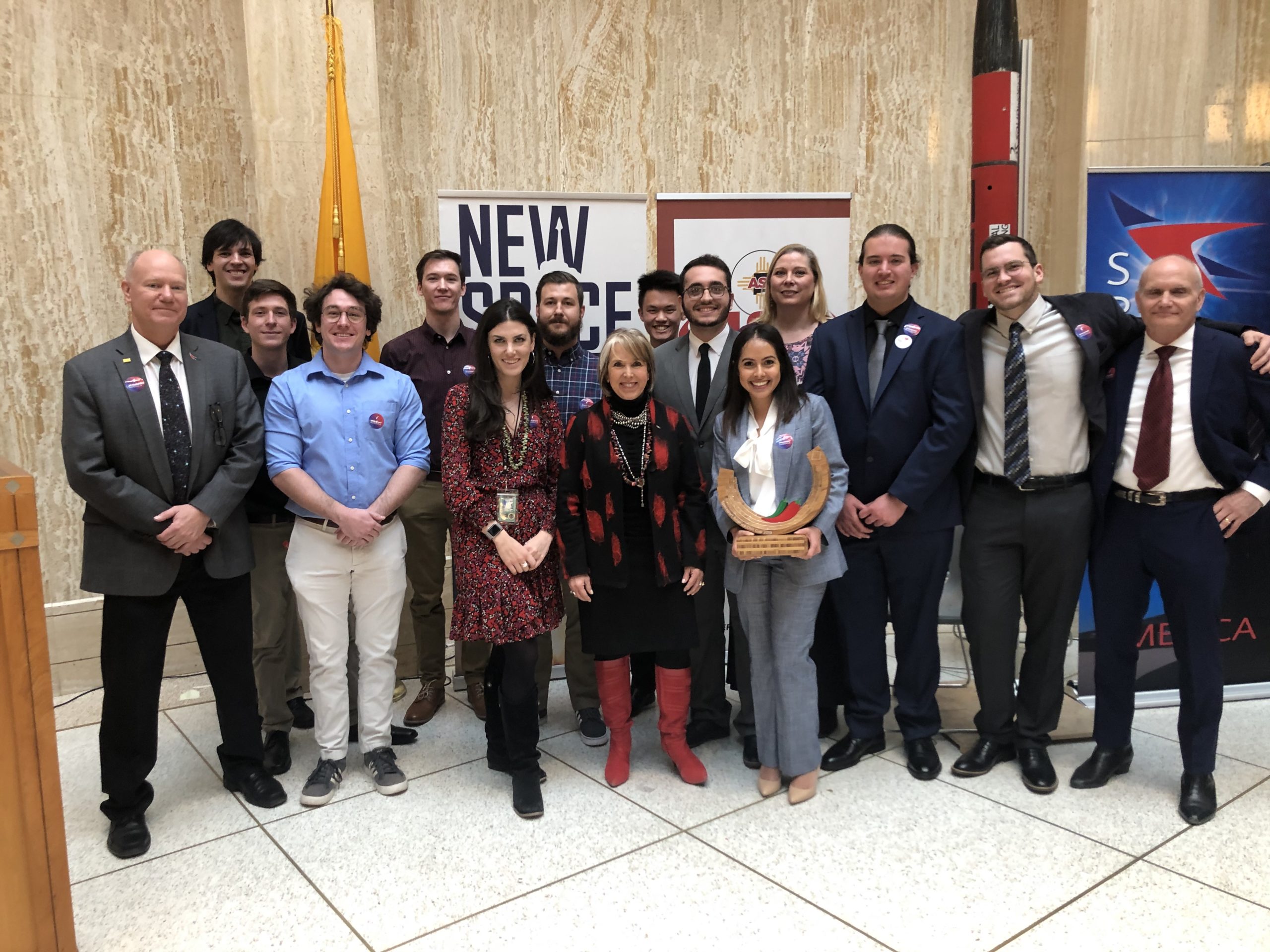
Verus Research mechanical engineers Victoria Ramirez and Scott Schneider, part of The University of New Mexico’s 2019 Lobo Launch Team, were recently recognized by New Mexico Governor Michelle Lujan Grisham as part of the January 30th Aerospace Day at the state capital in Santa Fe.
Governor Lujan Grisham presented the UNM rocket team with the 2019 Chili Cup award, making UNM the first to claim this honor. This award is given to the highest ranking New Mexico team in the Spaceport America Cup. The Spaceport America Cup is designed around the Intercollegiate Rocket Engineering Competition for student rocketry teams from all over the country and around the world. Students launched solid, liquid, and hybrid rockets to target altitudes of 10,000 and 30,000 feet.
Ms. Ramirez, noted, “We were excited to represent Verus Research today at this aerospace event, and we look forward to positively representing the Company in the future.” Verus Research Chief Technology Officer, Dr. J. Mark DelGrande, added “we are thrilled to have such high-quality team members at Verus Research and are looking forward to even greater things to come.”
Please see the Spaceport America Facebook site for a January 30th post. YouTube also has a video marking the event.